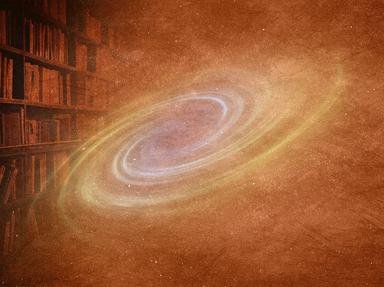Quiz Answer Key and Fun Facts
1. The main problem with Nothing (zero) to many ancient cultures was that there was no place for it within their number system; there was no need. The first step towards making such a place was the development of a mathematical system with symbols representing numbers. Still, without the zero, the system quickly becomes cumbersome as more and more symbols are needed to represent larger numbers. Another step in sophistication is needed; something that makes the notation more than just shorthand for the counting words themselves. What is this second step towards developing a meaningful zero?
2. Zero brought with it host of problems concerning Nothing. Many cultures ignored the concept entirely because it clashed with their own existing beliefs. The ancient Greeks and the Hebrews were among those that wrestled with the void. Which of these reasons would account for their difficulty with Nothing?
3. The only ones who didn't seem to have a problem with zero were the Indians. The Buddhist and Hindu traditions that flourished there were much more accepting of the concept. To them, zero was not a one-dimensional entity, grudgingly inserted into their lives. The concept itself was already familiar and comfortable; their philosophies recognized various aspects of Nothing and saw them as distinct "somethings." In fact, one of their principal Tantric meditational guides made use of their revolutionary belief that Nothing can generate something. What was this guide?
4. Now that the metaphorical concept of zero and Nothing had been, reluctantly, introduced into human culture, it was time for the next step: the physical zero, the vacuum. The contemplation and acceptance of the existence of such a thing as an actual void was to be a most convoluted undertaking. Putting aside the philosophical implications, the notion of such emptiness was downright terrifying. The process needed to start small, in this case, very small. The proposed existence of what objects helped send humanity on its way towards a reconciliation with the physical Nothing?
5. Nothing developed slowly but steadily throughout ancient history and into more modern eras. The Middle Ages, far from stagnating this process, actually removed one of the greatest obstacles to the continuance of "vacuum" thinking. God was taken out of the void; now religious sensibilities could be disregarded when considering new ideas about Nothing. This proved fortuitous. Without this impediment, the study of Nothing continued apace. Which one of these scientists did not contribute to the growing understanding of the vacuum?
6. Things had been going so well that something bad was bound to happen. Nothing was at the forefront of scientific thought. Yet, still the urge to discount the existence of the vacuum was there. One of the greatest fudge factors in scientific history was spawned due to this continued unwillingness to fully accept the vacuum. Even such great thinkers as Rene Descartes and Isaac Newton were at times convinced. What was this fudge factor?
7. With the eventual removal of the aforementioned fudge factor, vacuum studies were continued and eventually revolutionized by the introduction of quantum physics. However, the vacuum was about to take a sudden and surprising turn. The definition of the vacuum had to be realigned in light of the new ideas and theories being proposed by Albert Einstein, Max Planck, Werner Heisenberg and others. Why did the concept of Nothing have to be altered?
8. The new picture of the vacuum has led to many advances in the study of particle and quantum physics. It also may be the key to what is considered to be the Holy Grail of particle studies. Physicists have long been hunting for the underlying unity that links together all four fundamental forces that govern the Universe (gravity, electromagnetism, strong, and weak forces). What is the name of this long-searched for theory?
9. As it turns out, not only is the vacuum important for uniting the four fundamental forces but it is responsible for life itself. The early Universe existed in a unique state of temperature and energy; its evolution could have taken several different paths. Due to fluctuations in the vacuum, an important property of the early Universe dictated its growth into the full and life-giving one we exist in today. Which "expansive" property did the vacuum influence in just the right way?
10. Finally, it all comes back to Nothing. Vacuum energy, so important to the early evolution and formation of the Universe will also have a profound effect on its end. It will ultimately win out over all other forms of matter and energy. The acceleration and expansion of the universe will continue forever as the repulsive force of vacuum energy overcomes the attractive force of gravity. All matter and energy will diminish until nothing is left and the Universe is a smooth featureless void. What is the rather curious name for this theory of the Universe's end?
Source: Author
H0lyAerith
This quiz was reviewed by FunTrivia editor
crisw before going online.
Any errors found in FunTrivia content are routinely corrected through our feedback system.

